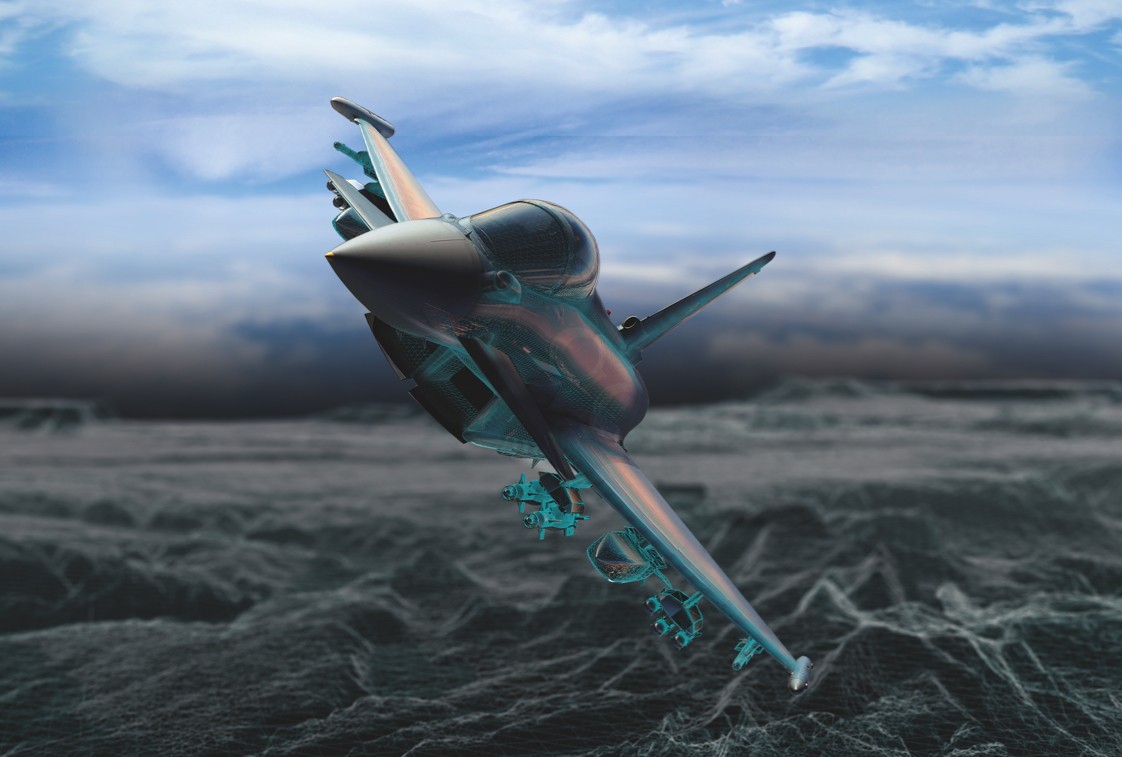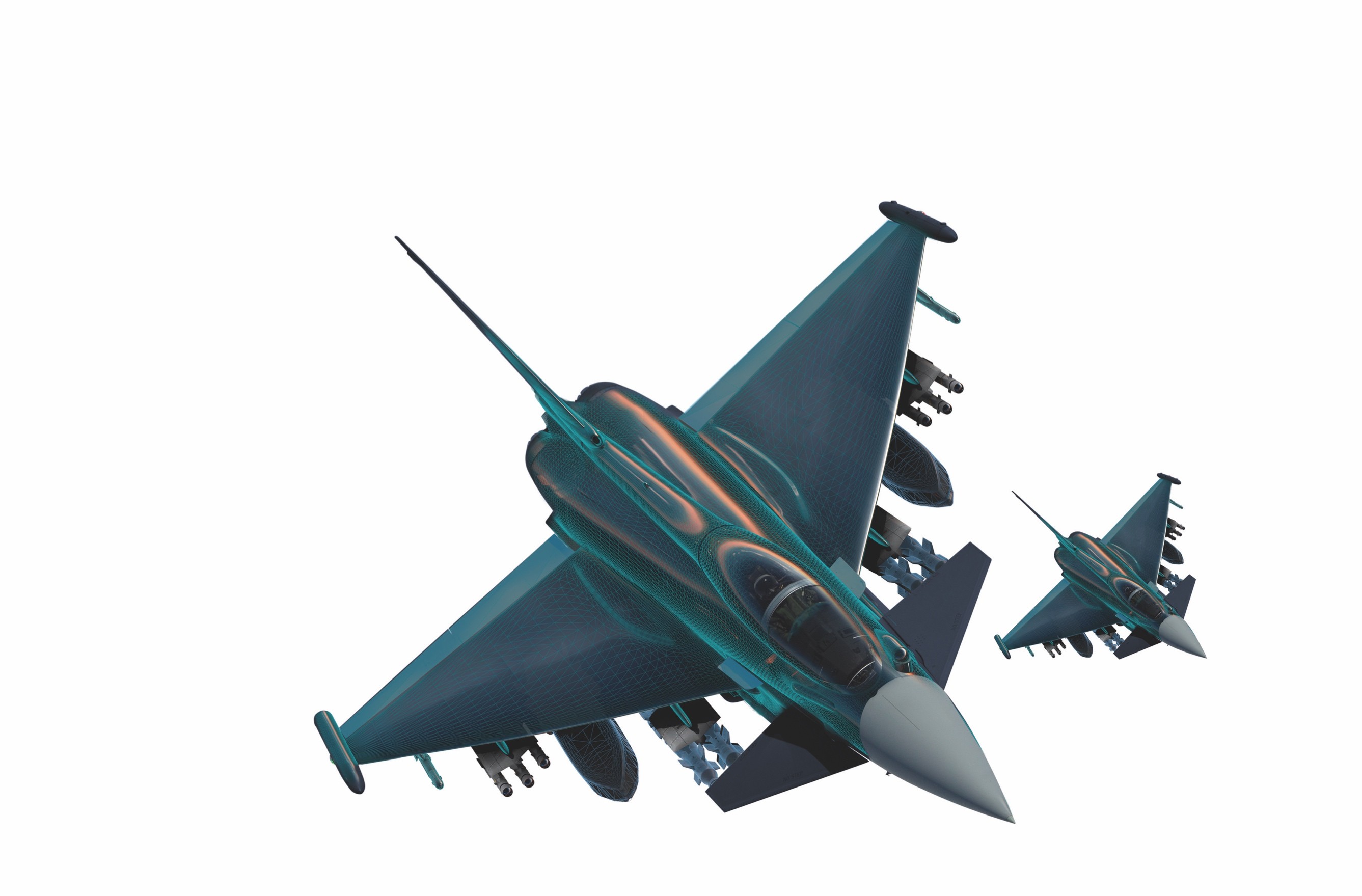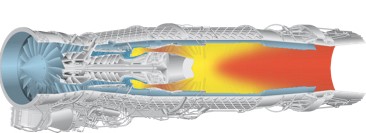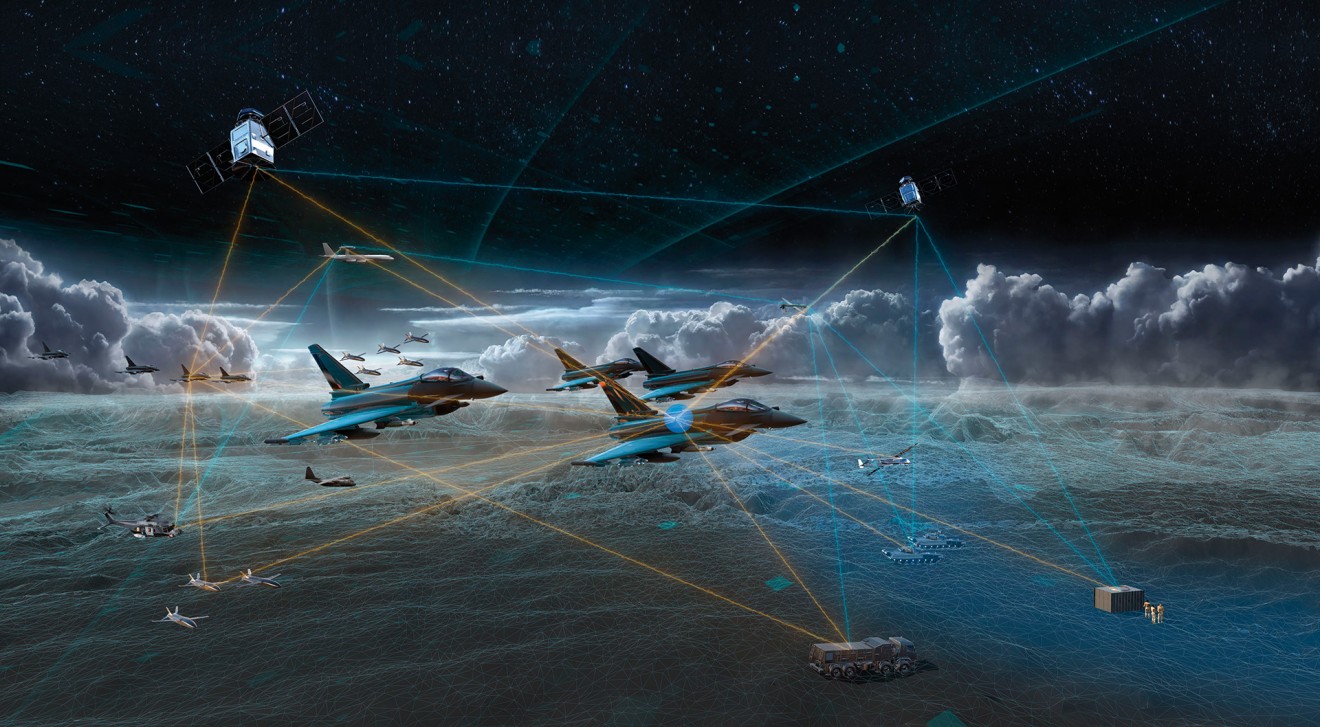Eurofighter is the established backbone of European air power. And, as Eurofighter evolves to meet a geopolitically and technologically changing world, it will take Europe’s defence industries forward to the next generation of weapon system development.
An evolving Eurofighter is absolutely vital, both in terms of meeting the emerging threats of a future battle space and also for European defence industries to develop the technologies that will feed into future air power.
Of course, future mission scenarios and resultant platform characteristics are also shaping the requirements for future FCAS solutions. And that’s why we see Eurofighter as the perfect bridge to – and a central pillar of – a European FCAS.
Eurofighter will be able to carry, demonstrate and certify a whole host of new technologies, and deliver them as a mature capability. It is therefore a logical step from an enhanced Eurofighter to a future FCAS solution.
But how exactly should the platform evolve and what are the priorities? Ongoing dialogue with our customer community points to five fundamental drivers currently shaping our thinking. Two reflect a changing political environment, the others focus on the counter-technologies being developed to combat and degrade our forces. The five are:
CHANGING ENVIRONMENT
Asymmetric threats: Dealing with threats from terror cells or insurgents who offer a different threat in terms of size and tactics — requiring the capability to deal with small, fast-moving targets operating in landscapes that demand a high precision to avoid collateral damage.
Homeland Security and Defence: In essence, the actions and strategies of current and emerging superpowers has seen European nations taking more responsibility and more ownership of their own territorial integrity over ‘out of area’ operations.
New Weapon Systems: New threats are constantly emerging and these include major development programmes from other nations. The ability to counter these threats is going to be critical to maintain air superiority.
Advanced Radar Systems and Electronic Warfare: Developments in air defence systems will drive future air warfare requirements. Advanced radar systems work in VHF/SHF Bands or have enhanced passive, bi-static capabilities, meaning you don’t see the radar but they see you. It means developing new capabilities to counter them and working on tactics that allow air forces to continue to be effective, such as Enhanced Electronic warfare aids supporting Anti Access / Area Denial (A2AD) strategies, allowing safe operations to be maintained while operating in this contaminated environment.
Cyber Technology: Ensuring your system is safe and cannot be hacked — or is able to fulfil its mission in spite of cyber-attack — will form part of future requirements.

KEY CHARACTERISTICS FOR AN EVOLVING EUROFIGHTER
These five areas will evolve and change over time but will continue to drive Eurofighter thinking on how the weapon system has to transform, such as introducing the game changing E-Scan radar, to complement and enhance mission capabilities for future roles that Eurofighter will be expected to take on. These roles include an enhanced air to ground role, an air to sea role, and also suppression of enemy air defences or destruction of enemy air defences roles too.
You can see this shift happening already. In the UK, Project Centurion is already transforming Eurofighter to take on roles that have previously been with Tornado. While in Germany, there’s also a requirement for a German Tornado replacement. With Airbus, we have answered the RFI to transform missions from Tornado to Eurofighter that take advantage of the capability, power and multi-role design of our platform.
THE TECHNOLOGIES THAT WILL SHAPE THE FUTURE BATTLESPACE
Interoperability & Connectivity: The future battlespace will be far more contested. Assets will need to link into a network and fulfil several roles, communicating in real time with a much larger interoperable set of assets on the ground, in the air, and share data. Assets will need to be able to go active or passive in terms of sensors, comms and detectability throughout a mission. Eurofighter Typhoon is already highly interoperable with all NATO assets, and will continue to develop and enhance this capability for the future battlespace.
Survivability: Improved survivability will mean taking advantage of all sensors on the platform and enhancing the Defensive Aid Sub-System (DASS) and mission management system to ensure the lowest observable profile and lowest possible emissions in any dynamic scenario.
Effective use of the sensors: Here, the arrival of E-Scan radar – the main sensor of the platform — will be huge but so too will data fusion. That’s about fusing all the data from the radar and other key sensors and enhancing the situational awareness of the pilot to ensure the weapons system can deal with all kinds of emerging threats. In the future this will require AI levels of information management – taking sensor and data fusion to the next level.

Network enabled weapons: A clear future requirement will be to either carry network-enabled weapons or ‘lead’ them if they’re launched by a different asset. The same idea follows with the UAV element too. Future platforms many need to ‘remotely’ control a UAV or swarm of UAVs.
Station time and persistence: A key consideration for future commanders will be how long they can keep their assets in theatre, and how quickly they can return. Of course, you have to have the fuel to re-engage and you have to have the weapons load to provide maximum effectiveness. Future planned developments for Eurofighter will enhance both these areas. Improving persistence will focus on the engine, in particular measures to reduce fuel consumption, as well as introducing enhanced refuelling capability and additional fuel tank solutions.
Sheer Weapons Load: Eurofighter already scores massively in this respect because of its huge and versatile weapons load, coupled with incredible performance, which gives it the ability to transport a large weapons load. There are 13 outboard stations, which can be further increased by use of multiple weapon launchers. It’s not just about numbers but flexibility too. This is key for the future when the number of mixed configurations you can support will bring significant advantages
CAPABILITY EVOLUTION
THE FUTURE COCKPIT
Eurofighter’s current cockpit arrangement is a perfect solution for the needs of operational pilots today. However, the arrival of an E-Scan radar along with other emerging technologies means there will be a demand for an enhanced pilot interface, which is leading us to look at a complete refresh of technology in the cockpit. That means a large area and high-resolution display that is capable of fusing data from the sensors and their subsystems to ensure the best possible support for a pilot in any given scenario.
It also means optimising the HOTAS (hands on throttle and stick) operation and making use of the Striker II helmet. We are in ongoing dialogue with our customers regarding these emerging requirements.
POWER GENERATION
Eurofighter already has an incredible power option with the EJ-200 twin engines, which provide high power generation in the platform, and have plenty in reserve to meet future needs. But clearly new sensors and capabilities also need increased processing power and to deliver that, you will need an intelligent power and cooling management system. Because generating more power means fuel consumption, maximising power use and optimising fuel efficiency become crucial for mission effectiveness.
EXTRA THRUST, EXTRA EFFICIENCY
- THE EJ200 OF THE FUTURE

Known for its reliability, maintainability and performance, the EJ200 is the best engine in the world for its class today. But Eurojet see Eurofighter flying well beyond the 2050s.
“To ensure the engine can still deliver for the next 30 or 40 years we have developed a number of technologies,” says Clemens Linden, CEO of Eurojet GmbH. “These can be inserted into the engine to provide growth, because, as the aircraft evolves with new systems and heavier weapons loads it will require more power.
“We can provide a 15 per cent increase in thrust — in fact we could eventually provide up to 25 per cent but that’s not needed at the moment.
“15 per cent more thrust would allow pilots to operate with a heavily loaded aircraft in the battlespace with the same performance levels as they have today. The technology insertion also provides more persistence — giving aircraft longer range or longer loitering time.
“Additional power will also boost the electrical power uptake of the aircraft’s systems. The modifications would also lead to improved life of the engine components and provide a positive knock-on effect on fuel consumption and through-life costs overall.”
How would increased thrust and fuel efficiency be achieved? “It’s all about physics and advanced technologies,” says Clemens. “To achieve more thrust we would increase the airflow and pressure ratios of the high and low pressure compressors and run higher temperatures in the turbines by using the latest generation single crystal turbine blade materials. And with higher aerodynamic efficiencies we can achieve a lower fuel burn.
“A third area of improvement would be the engine exhaust nozzle which would be upgraded with the installation of a 2-parametric version allowing independent and optimized adjustment of the throat and exit area at all flight conditions, providing fuel burn advantages.
“The technologies for the different components are at a Technology Readiness Level of between 7 and 9. The nozzle has been at ITP in Spain on a test bed for 400 hours.
“These are proven technologies — we would simply need to move it into a final development programme to pull them all together. We are confident we can maintain the reliability because we will not change the architecture of the engine.”
